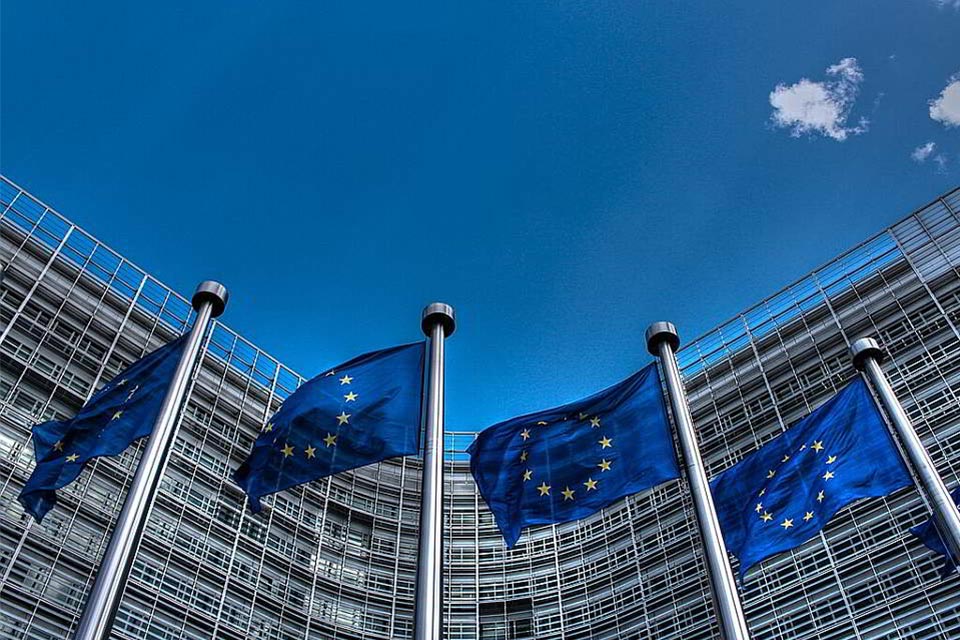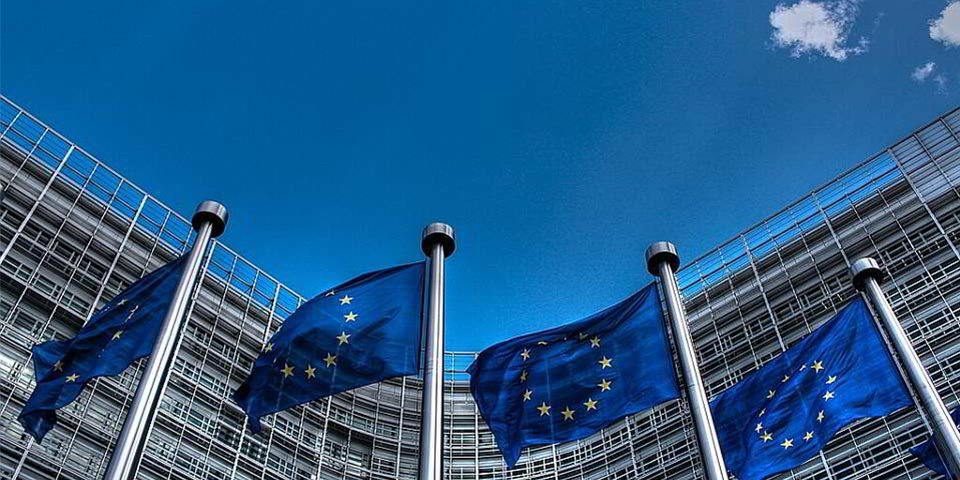As EU Member States ramp up defence spending, military greenhouse gas emissions are set to rise but remain largely unreported.

In this guest blog, Hannah Huibregtsen examines the 82% gap in EU military emissions reporting and argues that without mandatory accounting, the EU risks undermining both its climate goals and long-term security.
EU Green Deal at risk
Estimates indicate that military and related activities are responsible for approximately 5.5% of global greenhouse gas (GHG) emissions. With NATO member states now targeting defence spending levels of up to 5% of GDP, these emissions are expected to rise significantly in the coming years. As most EU Member States are part of NATO, this surge in defence spending will significantly impact EU climate targets.
Yet, under current climate policy frameworks, most notably the EU Green Deal, military emissions remain almost entirely unaddressed in terms of formal reporting obligations. This oversight highlights a critical policy gap which has far-reaching implications for both climate governance and security policy.
In terms of climate governance, the military emissions gap severely threatens climate targets, as these are based on incomplete data. In terms of security policy, the exemption of military emissions also creates a security paradox. By channelling substantial investments into armed forces that are heavily dependent on fossil fuels, European states risk undermining their own long-term security objectives. This occurs on two levels: first, by heightening strategic vulnerabilities associated with fossil fuel supply and price volatility; and second, by contributing to climate change, which many of these EU countries have long argued is a “threat multiplier”.
An 82% gap in what EU militaries report to the UN
I recently examined how military emissions and reporting practices in the 23 EU-NATO member states challenge the achievement of the EU Green Deal’s net-zero target. The findings were stark. By reviewing the latest national inventory reports submitted under the UN Framework Convention on Climate Change (UNFCCC), I found that EU-NATO countries collectively reported only 6.9 million tonnes of CO2e for 2021 in the assigned military emission reporting categories, 1.A.5 and 1.A.3.d.i. However, using a more comprehensive approach, building on methodologies from Tipping Point North South (TPNS) and the Transnational Institute (TNI), together with NATO defence expenditure data, I estimated the true figure to be closer to 39 million tonnes, revealing a reporting gap of at least 82%.
Such a wide gap does not come as a complete surprise given how current rules operate. Under the UNFCCC, reporting of direct military emissions (‘scope 1’) is voluntary and often incomplete. States have two primary options for reporting: category 1.A.5. (other, not specified elsewhere), and 1.A.3.d.i. (military water-borne navigation). Yet these categories frequently combine civilian and military data, are inconsistently applied, and are entirely voluntary. As a result, it is virtually impossible to obtain a clear, comparable picture of the direct emissions attributable to militaries across EU member states.
When it comes to indirect emissions, such as those from purchased energy (‘scope 2’) and extensive defence supply chains (‘scope 3’), the situation is even murkier. These emissions may appear under other sectors in national inventories, such as manufacturing or energy, but they are not identified as linked to military activities. This means that while they might be counted somewhere in national totals, their connection to defence spending is effectively invisible, leaving a major blind spot in assessing the climate impact of security policy.
This gap stems largely from national security concerns. However, as experts have noted, reporting aggregated military emissions data poses no meaningful security risk, since it does not require disclosing operational details, capabilities, or classified activities, it is comparable to how emissions are reported across other sectors of government.
Why reporting matters
There is growing recognition within EU institutions of the need to address military greenhouse gas emissions. The EU’s Climate Change and Defence Roadmap, recent European Parliament resolutions (2022, 2023), and ongoing work by the European Defence Agency Consultation Forum for Sustainable Energy in the Defence and Security Sector (EDA CF SEDSS) have all highlighted the importance of monitoring and reducing the defence sector’s climate impact. These initiatives reflect that within recent years, there has been an emerging consensus that reducing military emissions must be part of the EU’s broader climate strategy.
Yet despite this increased attention, military emissions remain largely absent from the EU’s central climate governance frameworks, including the Green Deal and National Energy and Climate Plans (NECPs), which are the primary documents through which Member States set out how they will meet EU climate and energy targets. This gap between political recognition and practical implementation has significant consequences for both the EU’s climate goals and the long-term resilience of its armed forces.
First, it jeopardises climate targets. The EU positions itself as a global leader in climate mitigation. Under the Green Deal, it has set an ambitious goal of reaching net-zero emissions by 2050. However, achieving this target requires comprehensive accounting across all major sectors. Failing to properly include a sector whose global emissions footprint rivals that of medium-sized EU member states, such as Portugal or Croatia, undermines the credibility and feasibility of these climate commitments.
Second, it compromises military resilience. As Dutch former Chief of Defence Tom Middendorp highlights in his book Climate General, armed forces are deeply reliant on fossil fuels for mobility and operations. This dependence introduces strategic vulnerabilities, leaving militaries exposed to price volatility, strained supply chains, and potential shortages. Transparent emissions reporting is not just about meeting climate targets; it is also essential for encouraging decarbonisation policies, in turn reducing militaries’ exposure to these vulnerabilities.
Third, it overlooks how climate change amplifies security risks. A growing body of research shows that climate impacts exacerbate existing pressures, contributing to food insecurity, water scarcity, and forced migration; factors that can drive conflict and instability. Climate stresses have already played a role in communal conflicts and provided openings for extremist groups in fragile regions. The Institute for Economics and Peace projects that over 2.8 billion people will live in countries facing severe ecological threats by 2050, displacing tens to hundreds of million people and significantly increasing the risk of conflict. Therefore, by neglecting to systematically account for the climate consequences of military activities, the EU risks deepening the very security challenges it seeks to mitigate.
Steps the EU should take to strengthen military emissions accounting
Addressing this gap requires a tailored EU approach that aligns climate and security strategies, integrates robust reporting mechanisms, and ultimately supports a shift toward lower carbon militaries.
1. Establish an EU-wide standard for military emissions accounting
The European Commission, in collaboration with the European Defence Agency, should develop a common methodology for consistently estimating and reporting military emissions across member states. While this approach should align with international standards such as the GHG Protocol and reflect ongoing work within NATO, an EU-specific framework is essential for ensuring coherence within the EU’s climate governance. In turn, the EU could use its experience developing a robust, transparent standard to inform, shape and advocate for improved military emissions reporting at the UNFCCC level.
2. Integrate military emissions into the EU Green Deal framework and NECPs
Member States should be required to include explicit reporting on both direct and indirect military emissions within their NECPs. Including military emissions would close existing loopholes, ensure that defence sectors are not exempt from climate accountability, and provide a clearer basis for assessing progress toward net-zero goals.
3. Link increased defence spending to climate risk assessments
As Europe plans substantial new investments in defence under initiatives such as ‘ReArm Europe’, it is critical that these expenditures are accompanied by robust climate impact and dependency assessments. This would help safeguard strategic autonomy and ensure that increased spending does not inadvertently lock in fossil fuel-dependent, high-emission pathways that compromise long-term security.
Looking ahead: bridging climate and security objectives
Failing to properly account for military emissions is more than a technical oversight, it represents a significant threat to the EU’s twin goals of climate leadership and robust security. Transparent, consistent reporting of military emissions is a foundational step toward aligning defence policies with climate objectives.
By closing this military emissions gap, the EU can strengthen its credibility on climate action, build armed forces that are better prepared for a changing energy landscape, and contribute to reducing the broader security risks posed by climate change. In an era where climate and security are increasingly interlinked, comprehensive accounting is not optional, it is essential for a stable, sustainable future. After all, you cannot manage what you don’t measure.
Hannah Huibregtsen is master’s student in International Relations, with a specialization in Global Political Economy at Leiden University. Her thesis, titled: The Military Emissions Gap, explored the implications of military emissions for the EU Green Deal’s net-zero targets.





